Elon Musk’s artificial intelligence company, xAI, is moving forward with the commercial launch of its flagship model, Grok 3, despite facing a high-profile countersuit from OpenAI. The company has officially introduced an API for Grok 3, granting developers and businesses access to the model for the first time.
Grok 3, which was first unveiled several months ago, is xAI’s answer to leading AI systems such as OpenAI’s GPT-4o and Google’s Gemini. Grok 3 functions as both an image processing tool and an advanced question answerer after xAI purchased X from Elon Musk in March.
The new API provides users two models, including the complete Grok 3 and the streamlined Grok 3 Mini that possesses advanced reasoning functionality. Both Grok 3 and Grok 3 Mini versions are available for purchase, where Grok 3 is priced at $3 for input tokens and $15 for output tokens, and Grok 3 Mini is more affordable with rates at $0.30 for input and $0.50 for output tokens per million.
Premium, speed-optimized tiers are also available. Users can access the Grok 3 faster model by paying $5 for each million input tokens processed as well as $25 for each million output tokens generated. Fast-track usage of Grok 3 Mini provides customers a pricing model of $0.60 for input processing and $4.00 for each million output tokens.
XAI’s pricing plan faces aggressive competition from Anthropic’s Claude 3.7 Sonnet due to its similar powerful reasoning capabilities. The performance capabilities of xAI’s Grok 3 fail to match those of Google’s Gemini 2.5 Pro in standardized AI tests. Various critics have noted possible misconstructions in xAI’s benchmark documentation, which raises doubts about Grok 3’s functional strength.
The model faces an operational drawback because its context window parameter defines how much data it can handle simultaneously. The xAI platform stated Grok 3 could process 1 million tokens in early advertising, but its API now has a maximum limit of 131,072 tokens that correspond to about 97,500 words.
Since Grok’s initial launch nearly two years ago, Musk has framed the model as a bold alternative to what he describes as “woke” AI systems , unfiltered and more open to controversial topics. Earlier Grok models gained notoriety for their willingness to use vulgar language when prompted. Still, they were criticized for exhibiting a left-leaning bias on politically charged issues such as transgender rights and diversity initiatives.
Musk has attributed those tendencies to Grok’s public web-based training data and has promised to recalibrate future models toward a more politically neutral stance. While Grok 3’s behavior in this regard remains under scrutiny, critics have pointed to instances such as the brief censoring of critical content about Donald Trump and Musk himself as signs that true neutrality may still be elusive.





